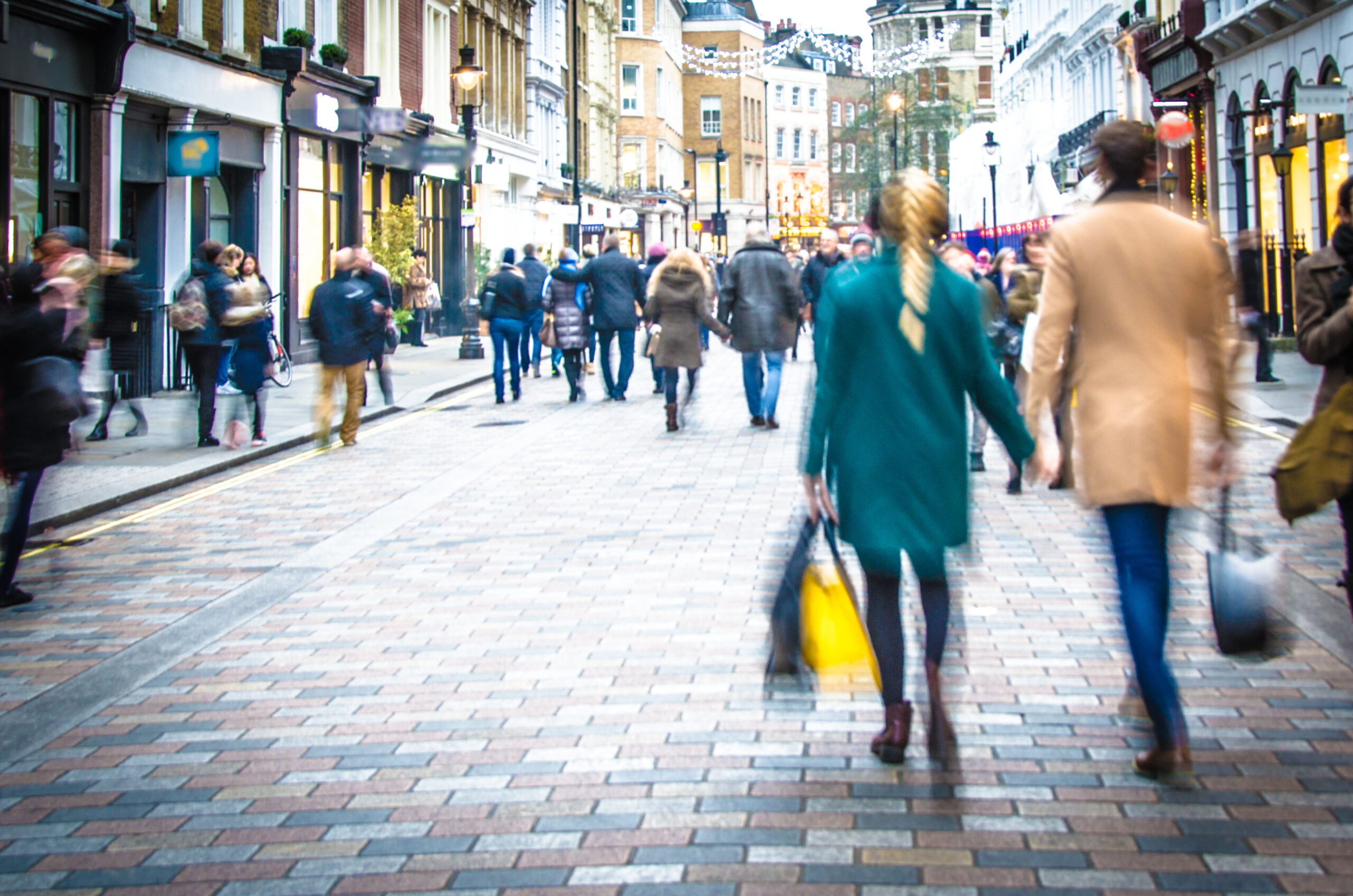Online sales grew strongly in 2021, in a year in which retailers invested heavily in their ecommerce platforms, but fell back in December as online shoppers headed in-store for certainty, new figures suggest.
Almost half of non-food retail sales were online in 2021, according to the monitor, while ecommerce sales notched up double digit growth over the year.
How shoppers bought in 2021
Ecommerce sales of non-food products in the whole of 2021 were 14.3% ahead of the previous year, while across all channels, retail sales grew by 9.9%, according to the latest BRC/KPMG Retail Sales Monitor. They were also 6.6% higher than in 2019.
Food sales grew by 3.1% in that time, while non-food sales were 15.6% ahead of the previous year. And overall, some 46.9% of non-food retail sales were online during the year. At the same time, in-store sales of non-food items grew by 38.4% in 2021 compared to 2020 – but fell by a total of 7.7% compared to December 2019.
Helen Dickinson, chief executive of the British Retail Consortium (BRC), says: “Retailers did well to weather the challenging trade conditions, with retail sales for 2021 up on both the previous year and compared to pre-pandemic levels. Continuing a trend throughout the pandemic towards online shopping, 2021 saw a double digit rise in non-food online sales, a testament to retailers’ huge investments in their online platforms. However, retail faces significant head winds in 2022, as consumer spending is held back by rising inflation, increasing energy bills, and April’s National Insurance hike. It will take continued agility and resilience if they are to battle the storm ahead, while also tackling issues from labour shortages to rising transport and logistics costs.”
How UK shoppers bought in December 2021
In December, some 45% of non-food retail sales were online, says the BRC. That’s down from 52.5% in December 2020, a month when the second national lockdown came to an end, but many non-essential retail stores were then closed again in regional tiered measures.
Online non-food sales were 13.9% down on December 2020, while retail sales grew by 2.1% in total, compared to the previous year – when sales had grown by 1.8% on 2019. But online sales fell by 13.9% that month, a year after lockdown conditions boosted online sales ahead of Christmas 2020.
In-store sales grew by a total 36% in the three months to December 2021, and by 26.8% on a like-for-like basis that strips out the effect of store – and business – openings and closures. In-store sales were also 7.7% lower than they were in the same period in 2019.
Dickinson says: “Despite the recent Omicron outbreak, retail sales held up through December. Many people chose to shop online rather than travel to nearby high streets and shopping centres. Loungewear was back in fashion, as many pre-empted the possibility of future restrictions. Meanwhile, the return of work-from-home advice and reduction in Christmas social events, caused formalwear sales to slow. In the face of rising case numbers and supply chain issues, people in retail pulled out all the stops to ensure everyone got what they wanted this Christmas.”
And Paul Martin, UK head of retail at KPMG, says the spread of the Omicron variant and updated government guidelines slowed spending during the final weeks of the year. Apparel and jewellery continued to dominate Christmas gift buying at the tills, whilst spending on food and drink was solid, although it slowed to just over 1%.
He says: “Consumers continued to head to the high street for their festive gifts, determined to secure the presents they wanted and not leaving online deliveries arriving on time to chance. Footwear was the only online category to see mild growth as overall online sales continued to decline, falling by over 8% in December albeit against strong comparators in 2020.”
In-store footfall, however, was still 18.6% lower in December than it was two years earlier, in December 2019, according to the latest BRC-Sensormatic IQ Footfall Monitor.
Martin adds: “As we head into 2022, retailers will be keeping close to Government Covid-19 updates and hoping consumer confidence holds up in order to offset the rising cost challenges they are likely to experience for the foreseeable future. Retailers have worked hard to manage factors in their control throughout the pandemic to adapt to the changing environment, but there are many macro factors outside of their control that could impact them this year. With many retailers cautiously optimistic for 2022, focussing on continuously re-engineering their business models, ensuring they operate resilient supply chains and have a tight grip on their costs will be the top priorities.”
Susan Barratt, chief executive of grocery analyst IGD, says: ““Food and drink sales delivered a strong performance in December 2021 and were back in year-on-year growth. This is particularly impressive considering the exceptionally strong sales recorded in December 2020 and indicates that many shoppers took advantage of being able to celebrate Christmas this year with family and friends.”









